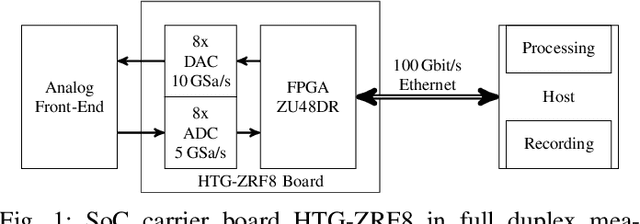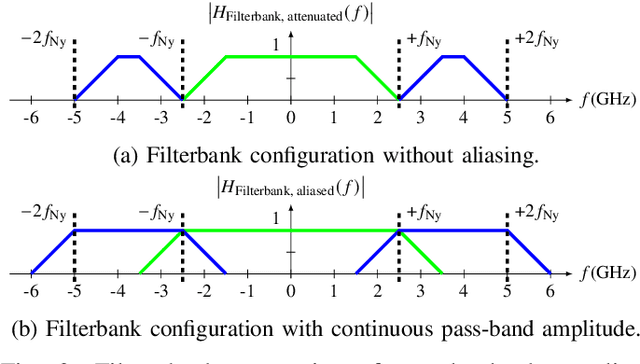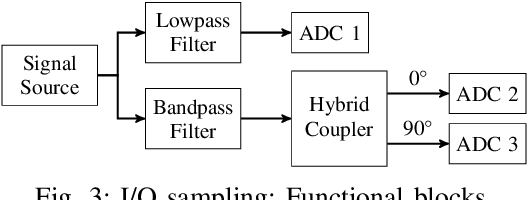Michael Schubert
Accelerating Innovation in 6G Research: Real-Time Capable SDR System Architecture for Rapid Prototyping
Feb 22, 2024



Abstract:The next global mobile communication standard 6G strives to push the technological limits of radio frequency (RF) communication even further than its predecessors: Data rates beyond 100 Gbit/s, RF bandwidths above 1 GHz, and sub-millisecond latency necessitate very high performance development tools to enable the extent of innovation required for 6G's likely features. We propose a new SDR firmware and software architecture designed explicitly to meet these challenging requirements. It relies on Ethernet and commercial off-the-shelf network and server components to maximize flexibility and to reduce costs. We analyze state-of-the-art solutions (USRP X440 and other RFSoC-based systems), derive architectural design goals, explain resulting design decision in detail, and exemplify our architecture's implementation on the XCZU48DR RFSoC. Finally, we prove its performance via measurements and outline how the architecture surpasses the state-of-the-art with respect to sustained RF recording while maintaining high Ethernet bandwidth efficiency. Building a micro-Doppler radar example, we demonstrate its real-time and rapid application development capabilities.
Receiver Bandwidth Extension Beyond Nyquist Using Channel Bonding
Oct 14, 2022



Abstract:Current and upcoming communication and sensing technologies require ever larger bandwidths. Channel bonding can be utilized to extend a receiver's instantaneous bandwidth beyond a single converter's Nyquist limit. Two potential joint front-end and converter design approaches are theoretically introduced, realized and evaluated in this paper. The Xilinx RFSoC platform with its 5 GSa/s analog to digital converters (ADCs) is used to implement both a hybrid coupler based in-phase/quadrature (I/Q) sampling and a time-interleaved sampling approach along with channel bonding. Both realizations are demonstrated to be able to reconstruct instantaneous bandwidths of 5 GHz with up to 49 dB image rejection ratio (IRR) typically within 4 to 8 dB the front-ends' theoretical limits.
 Add to Chrome
Add to Chrome Add to Firefox
Add to Firefox Add to Edge
Add to Edge